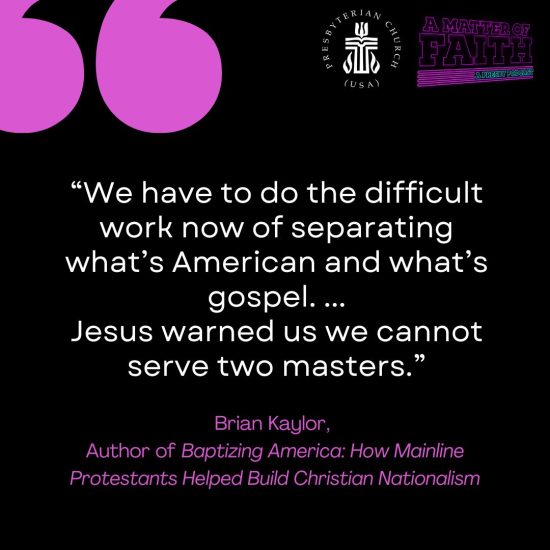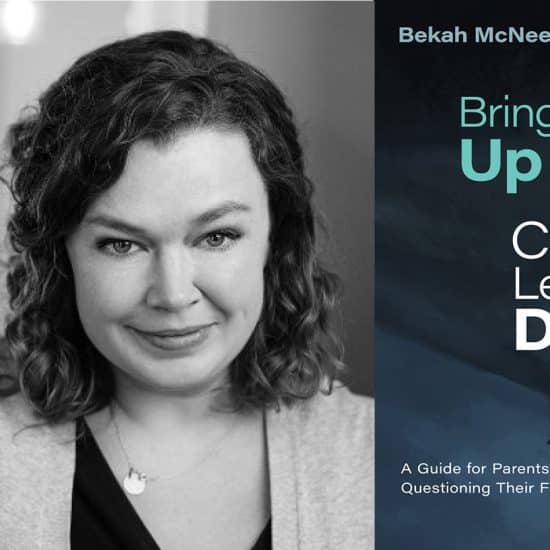Believers are not limited to church or religious settings as a vehicle for artistic expression. Many have found mainstream audiences receptive to a sacred, uplifting word.

St. Louis-based painter Bert VanderMark finds inspiration for art in the Bible. (Bert VanderMark painting)
|
“If you’re serious about your faith, it shows up in all you do…. It will shine through in your work,” author Sally Jadlow of Overland Park, Kan., believes.
A longtime writer for Christian markets, Jadlow currently spends about half her time writing mainstream material, including articles for a Johnson County, Kan., publication for 50+ adults and for a local community center. She also just released an historical fiction novel — what she calls “fact-ion” — based on her grandfather’s diary.
Jadlow teaches writing as well, working with people who want to write memoir.
“Often you don’t say anything ‘religious’ but you draw from life,” she explained.
Songwriter Ryan O’Neal, a solo artist under the moniker Sleeping At Last, performs primarily in the mainstream. While he has a strong faith, he has adopted a rule about the role faith plays in his music.
“I will never force faith into my songs, nor will I ever force faith out of my songs. That ‘rule’ constantly keeps me in check,” O’Neal said. “I aim to be as personal and sincere as I can be in my writing — treating it as my journal in a lot of ways — so the idea of my faith being reflected in my music organically is very important to me.”
An independent artist, Sleeping At Last has garnered acclaim as O’Neal’s songs have been featured on the ABC television shows “Grey’s Anatomy” and “Private Practice.” In 2012, his songs also were heard on FOX’s “So You Think You Can Dance” and the season finale of “Bones.” His music has been heard on CBS’ “Criminal Minds,” the CW’s “Reign” and “The Carrie Diaries,” NBC’s “Believe” and SyFy’s “Being Human.”
In addition, a number of movies — the trailer for “The Fault in Our Stars,” “The Twilight Saga: Breaking Dawn Pt. 1” and “Fun Size” have used his work.
Painter Bert VanderMark of St. Louis finds inspiration in the Bible for his paintings and uses art to share with others the truth in God’s Word, he explained.
VanderMark also is a graphic artist and founder of Studio Montage, a graphic design firm that has won numerous awards for work done for educational publishers. He finds his faith emerges through it. “Even commercial expression of talent gives grace to others,” he said. “That’s how we witness…. We bless others in his name.”
Journalist Carolyn Scheidies of Kearney, Neb., has written a regular column for the regional Kearney Hub and articles, features and promotional material for several media and businesses.
She also has written and published more than 30 books, both non-fiction and fiction, including her latest book series of Regency Romances for Harlequin Heartsong Presents. Some of her works, such as the Harlequin series and others, have been published traditionally, and she has self-published some.
Though much of her work is in the mainstream, she believes her Christian worldview shows in everything she writes. “I believe in doing my very best whenever I write for myself or when hired to do a job. My approach to the issues of the day come from my faith and the basic principles that make society work,” she said.
“Biblical values are about loving God, respecting self and reaching out in love to others. It is also standing up for truth. I try to do this with thought, clarity and respect.”
Another Nebraska author, Kim Stokely of Bellevue, has a bachelor of fine arts degree and a master’s degree in dramatic communication. Most of her writing, including contributions to four “Chicken Soup for the Soul” anthologies, has appeared in Christian markets.
However, her fiction efforts have crossed over into the mainstream. She has had two stories published in “Writers Journal,” and recently self-published her first novel, “Woman of Flames.” Although the book is based on the life of Old Testament judge Deborah, Stokely expanded the biblical story to create a political thriller.
She also is working on two novels for young adults, one of which will be the third in a three-book fantasy trilogy.
“My goal has always been to write stories that people with no religious background will enjoy. I don’t preach. I don’t hammer out the road to salvation. I hope God’s truth shines through the characters and I leave it to him to move people’s hearts,” she explained.
Although church members don’t always understand their efforts, the four artists said their congregations usually support their efforts. The appearance of O’Neal’s music on popular television and in movies sometimes has resulted in judgment and criticism. “Sometimes as a result, I’ll receive emails from religious people who disagree with the choices to be a part of those non-religious shows [and] movies,” he said.
“But overall, I’ve been very blessed that support and kindness win over judgment and discouragement.”
Scheidies’ tough hide as a journalist and her personality generally deflect any criticism that comes her way. But mostly she has received “great” support from her family, friends and church.
She also believes that her trust in God’s call mitigates what others might think. “I have never been ashamed of what God called me to do and have no problem talking to others about this,” she said.
Stokely relies on a mainstream writers’ critique group and a couple of women, particularly her pastor’s wife, for spiritual insight and to hold her to God’s standards. “Where my Christian friends keep me accountable to God, my secular friends keep me accountable to the readers,” she said.
Jadlow utilizes her church’s prayer cards to solicit specific prayer for each stage in a writing project. The congregation has consistently responded to her requests.
VanderMark hasn’t had any pushback from church members, he said. But rather than dealing with criticism, he had to explain how to use art as worship. “It takes time [to teach the concept]. It takes a specific calling to a specific artist in a specific church,” he said.
His church initially asked him to teach a painting class. Instead, he agreed to do an arts-in-worship class. “Making a better artist is not the primary goal,” he said. “But to make a stronger believer is the goal.”
And VanderMark, Scheidies, Jadlow and Stokely continue to use their talents in the church — VanderMark as a church consultant on art and worship and the others as resources for communication needs.
But VanderMark is quick to point out that people are creative no matter their career choice and can use whatever they do to serve God. “If the world is blessed by the quality of our work, and we give God the glory,…that could be in baseball, football, cooking, sewing, anything,” he said.






